Bài giảng Macroeconomics - Chapter 1: Introduction to macroeconomic policy issues and data - Nguyễn Thùy Dung
This section introduces you to:
▪ the issues macroeconomists study
▪ the tools macroeconomists use
▪ some important concepts in macroeconomic
analysis
1.1 The Science of MacroeconomicsInstitute of International Education
Important issues in macroeconomics
▪ Why have some countries experienced rapid
growth in incomes over the past century while
others stay in poverty?
▪ Why do some countries have high rates of
inflation while others maintain stable prices?
▪ Why do all countries experience recessions and
depressions? Can the government do anything?

Trang 1
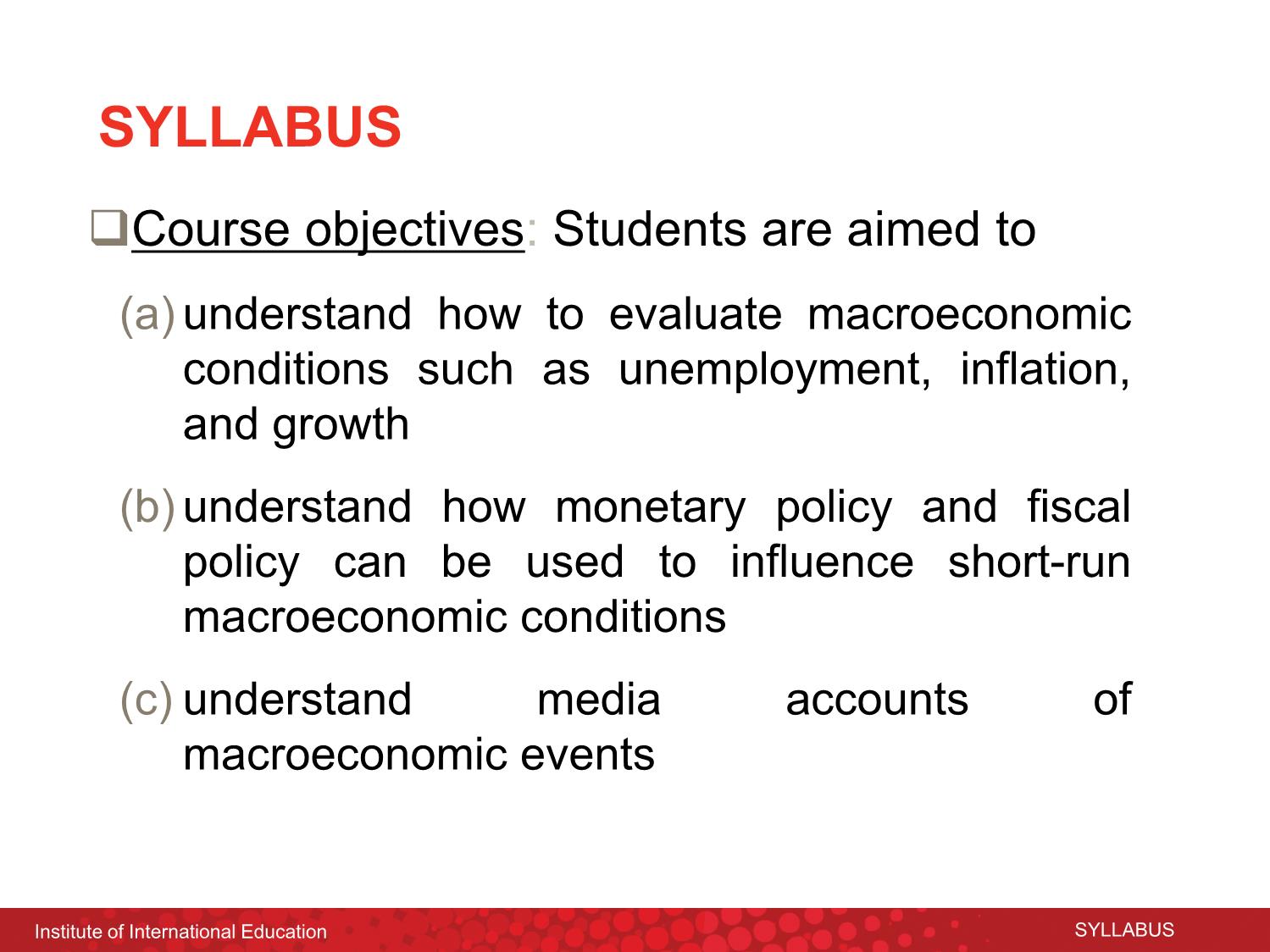
Trang 2

Trang 3
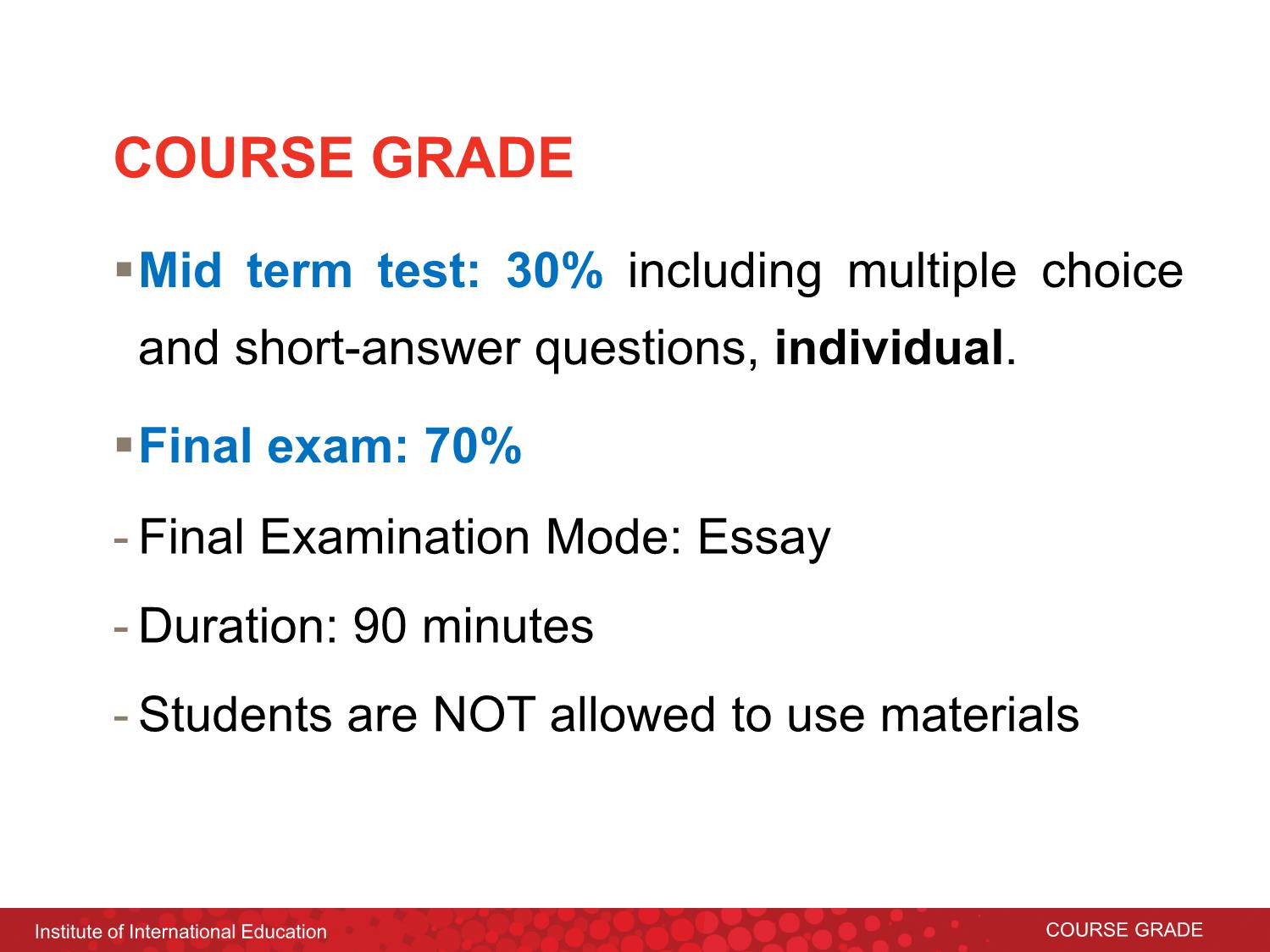
Trang 4

Trang 5

Trang 6
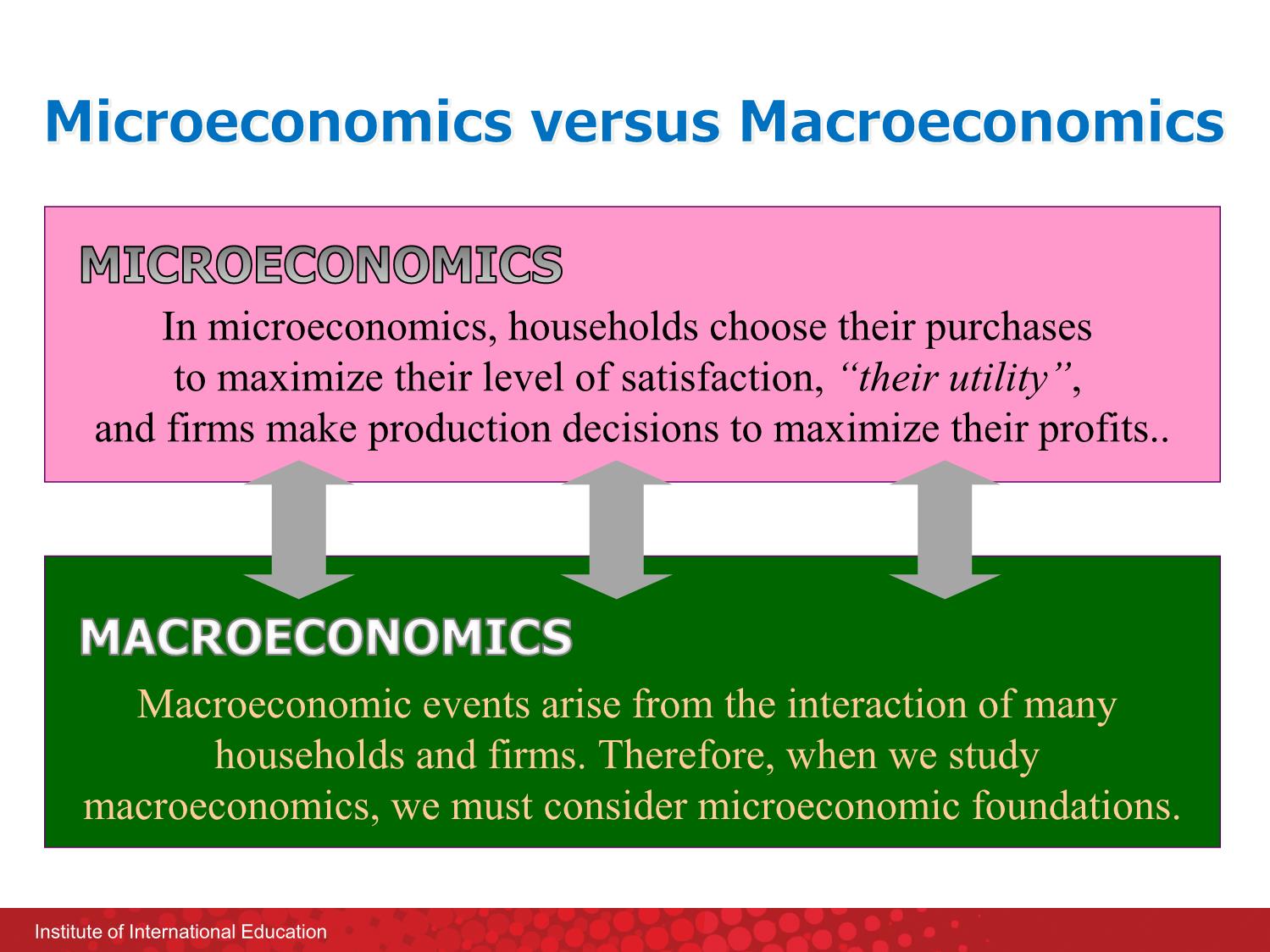
Trang 7
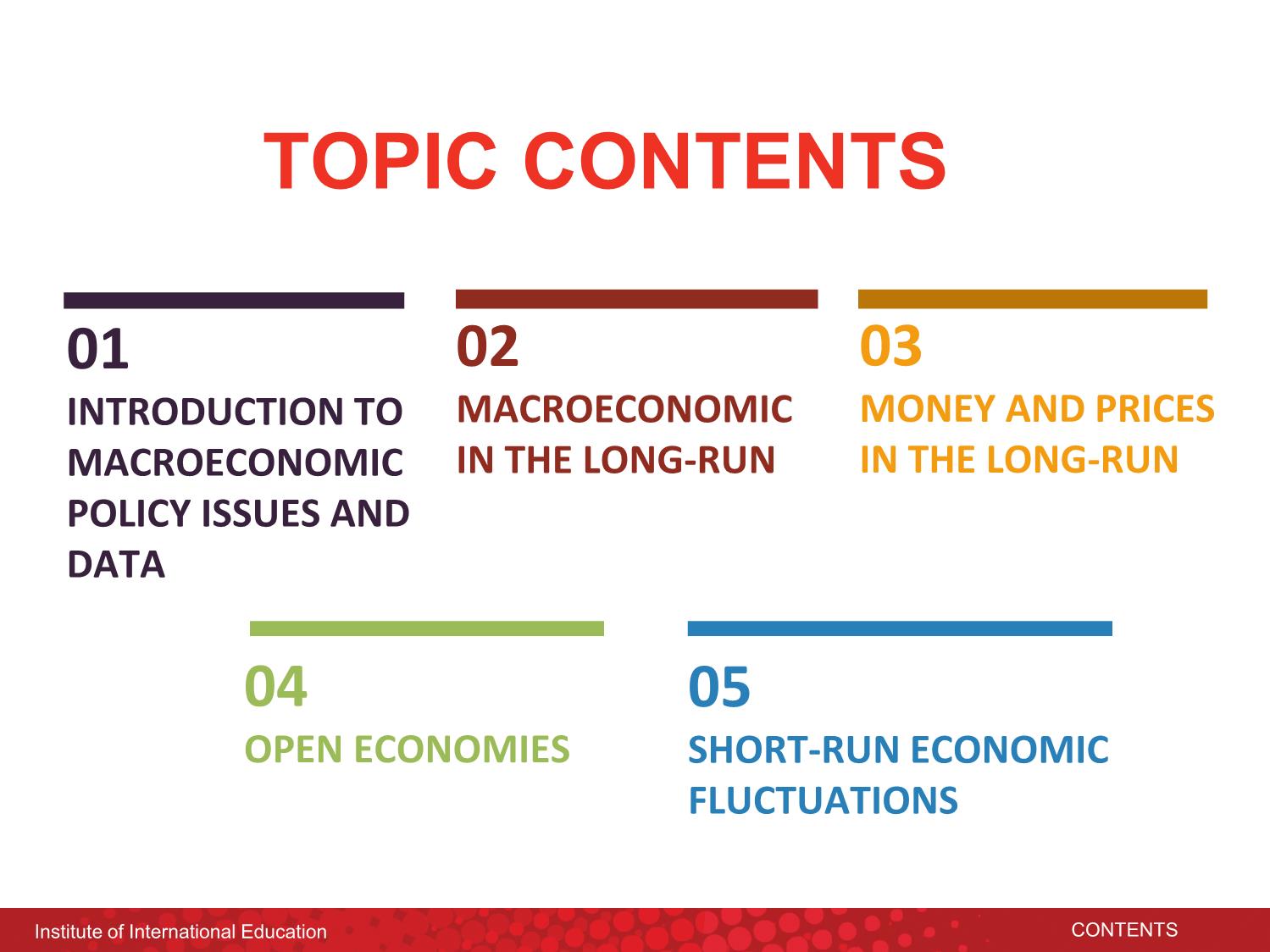
Trang 8
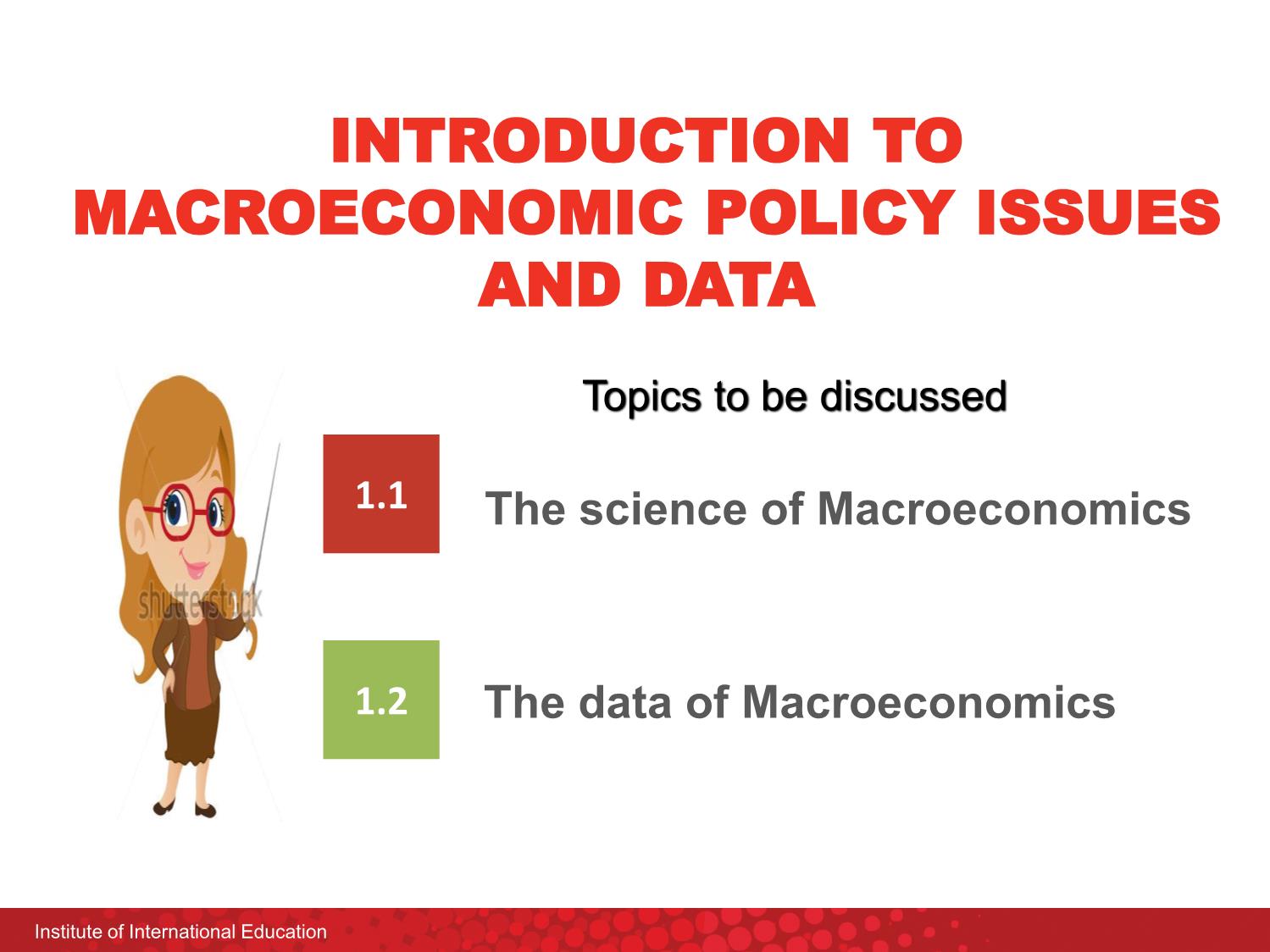
Trang 9
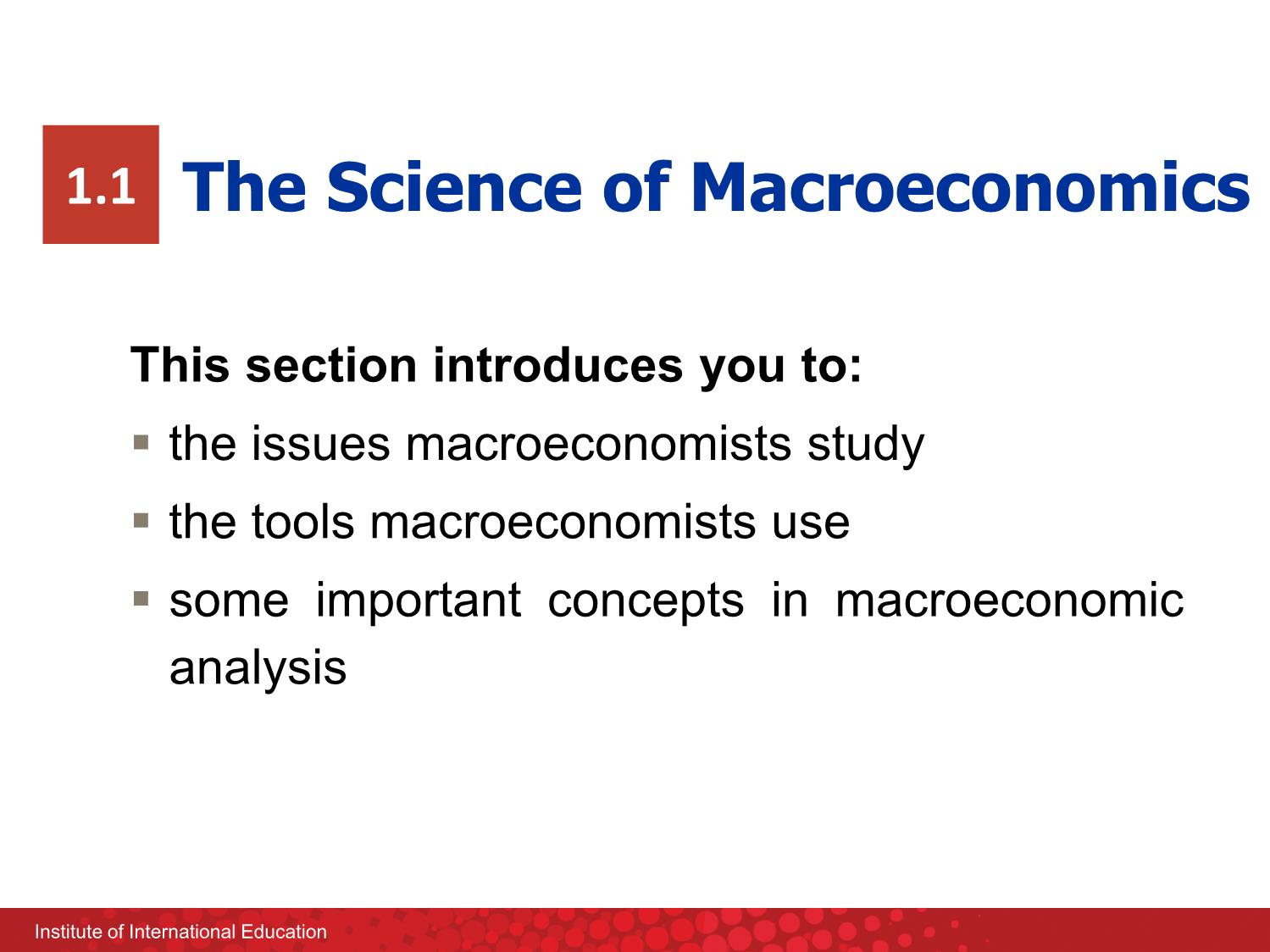
Trang 10
Tải về để xem bản đầy đủ
Bạn đang xem 10 trang mẫu của tài liệu "Bài giảng Macroeconomics - Chapter 1: Introduction to macroeconomic policy issues and data - Nguyễn Thùy Dung", để tải tài liệu gốc về máy hãy click vào nút Download ở trên
Tóm tắt nội dung tài liệu: Bài giảng Macroeconomics - Chapter 1: Introduction to macroeconomic policy issues and data - Nguyễn Thùy Dung

2 demand equation: ( , )=dQ D P Y D2 A shift in Demand Institute of International Education Changes in Equilibrium 2) The effects of increasing in flour price Q Quantity of pizza P Price of pizza S1 D Q1 P1 An increase in Pm reduces the quantity of pizza producers supply at each price which increases the market price and reduces the quantity. P2 Q2 S2 A shift in Supplysupply equation: Q s = S (P, Pm) Institute of International Education The use of multiple models ▪ No single model can address all the issues we care about. ▪ e.g., our supply-demand model of the pizza market ▪ can tell us how a fall in aggregate income affects price & quantity of pizza. ▪ cannot tell us why aggregate income falls. Institute of International Education The use of multiple models ▪ So we will learn different models for studying different issues (e.g., unemployment, inflation, long-run growth). ▪ For each new model, you should keep track of ▪ its assumptions ▪ which variables are endogenous, which are exogenous ▪ the questions it can help us understand, and those it cannot Institute of International Education Prices: flexible vs. sticky ▪ To answer most questions, economists use market-clearing models ▪ Market clearing: An assumption that prices are flexible, adjust to equate supply and demand. ▪ In the short run, many prices are sticky – adjust slowly in response to changes in supply or demand. For example, ▪ many labor contracts fix wage for a year or longer. ▪ many magazine publishers change prices only once every 3-4 years. Institute of International Education ▪ After all, prices adjust to changes in supply and demand. ▪ Long run: Price flexible is a good assumption, markets clear. ▪ Short run: Prices are sticky, then demand won’t always equal supply. This helps explain: ▪ unemployment (excess supply of labor) ▪ why firms cannot always sell all the goods they produce Prices: flexible vs. sticky Institute of International Education 1.2 The Data of Macroeconomics Gross Domestic Product Consumer Price Index Unemployment rate ➔ Rather than telling us about a particular household, firm, or a market these statistics tell us something about the entire economy. Institute of International Education Measuring a Nation’s Income Gross Domestic Product (GDP) ▪ When judging whether the economy is doing well or poorly, it is natural to look at the total income that everyone in the economy is earning. ▪ GDP tells us the nation’s total income and total expenditure on its output of goods & services. Institute of International Education There are 2 ways of viewing GDP Total income of everyone in the economy Total expenditure on the economy’s output of goods and services Households Firms Income $ Labor Goods Expenditure $ Income, Expenditure and the Circular Flow For an economy as a whole, income must equal expenditure 29 the market value of all final goods & services produced within a country in a given period of time. Goods are valued at their market prices, so: ▪ All goods measured in the same units (e.g., dollars in the U.S.) ▪ Things that don’t have market value are excluded, (e.g., housework you do for yourself.) Gross domestic product (GDP) is Institute of International Education Institute of International Education $0.50 $1.00 GDP = (Price of apples Quantity of apples) + (Price of oranges Quantity of oranges) = ($0.50 4) + ($1.00 3) = $5.00 Suppose that the economy produces four apples and three oranges. How can we compute GDP? Multiply each good by its price and then add them all together Using market prices 31 the market value of all final goods & services produced within a country in a given period of time. ▪ Final goods: intended for the end user ▪ Intermediate goods: used as components or ingredients in the production of other goods GDP only includes the value of final goods. In other way, GDP is also the total value added of all firms in the economy Gross domestic product (GDP) is Institute of International Education E.g.: McDonalds buy meat at $0.5 and ▪ 32 Exercise: Value added of a firm Assume that these are the only transactions in the economy ▪ A farmer grows a bushel of wheat and sells it to a miller for $1.00. ▪ The miller turns the wheat into flour and sells it to a baker for $3.00. ▪ The baker uses the flour to make a loaf of bread and sells it to an engineer for $6.00. ▪ The engineer eats the bread. Compute value added at each stage of production and GDP Institute of International Education 34 the market value of all final goods & services produced within a country in a given period of time. GDP includes ▪ tangible goods (like DVDs, mountain bikes, beer) ▪ and intangible services (dry cleaning, concerts, cell phone service). Institute of International Education Gross domestic product (GDP) is 35 the market value of all final goods & services produced within a country in a given period of time. GDP includes currently produced goods, not goods produced in the past. Institute of International Education Gross domestic product (GDP) is 37 the market value of all final goods & services produced within a country in a given period of time. GDP measures the value of production that occurs within a country’s borders, whether done by its own citizens or by foreigners located there. Institute of International Education Gross domestic product (GDP) is 38 the market value of all final goods & services produced within a country in a given period of time. Usually a year or a quarter (3 months) Institute of International Education Gross domestic product (GDP) is 40 The Components of GDP ▪ GDP includes all of these various forms of spending on domestically produced goods and services ▪ Four components: Y = C + I + G + NX Institute of International Education ▪ These components add up to GDP (denoted Y): ▪Consumption (C) ▪ Investment (I) ▪Government Purchases (G) ▪Net Exports (NX) 41 Consumption (C) Institute of International Education ▪ is total spending by households on good & services, with the exception of purchases of new housing ✓durable goods last a long time ex: cars, home appliances.. ✓nondurable goods last only a short time ex: food, clothing ✓services work done for consumers ex: dry cleaning, hair cut 42 Investment (I) Institute of International Education ▪ is total spending on goods that will be used in the future to produce more goods & services. ▪ includes spending on ▪ capital equipment (e.g., machines, tools) ▪ structures (factories, office buildings, houses) ▪ inventories (goods produced but not yet sold) Note: “Investment” does not mean the purchase of financial assets like stocks and bonds. 43Institute of International Education Government Purchases (G) ▪ is all spending on the goods & services by local, state, and federal governments. ▪ Including salaries of government workers, military equipment, highways, ▪ G excludes transfer payments to individual, such as Social Security or welfare. They are not purchases of goods & services. 44Institute of International Education Net Exports (NX) ▪ is are the value of goods and services sold to other countries (exports) minus the value of goods and services that foreigners sell us (imports). ▪ Imports are the portions of C, I, and G that are spent on goods & services produced abroad. ▪ Adding up all the components of GDP gives: Y = C + I + G + NX 45 Components of U.S. GDP in 2014 Institute of International Education Source: Bureau of Economic Analysis 46Institute of International Education In each of the following cases, determine how much GDP and each of its components is affected (if at all). A. Debbie spends $200 to buy her husband dinner at the finest restaurant in Boston. B. Sarah spends $40,000 car from Range Rover, the imported British carmaker. C. Jane spends $1200 on a computer to use in her editing business. She got last year’s model on sale for a great price from a local manufacturer. D. General Motors builds $500 million worth of cars, but consumers only buy $470 million worth of them. GDP and its components 49Institute of International Education Real versus Nominal GDP ▪ GDP measures the total spending on goods and services in all markets in the economy. ▪ Nominal GDP values output using current prices. It is not corrected for inflation. ▪ Real GDP values output using the prices of a base year (constant prices). Real GDP is corrected for inflation 50Institute of International Education EXAMPLE: Compute nominal GDP in each year: multiply Ps & Qs from same year 2015: $10 x 400 + $2 x 1000 = $6,000 2016: $11 x 500 + $2.50 x 1100 = $8,250 2017: $12 x 600 + $3 x 1200 = $10,800 Pizza Coconut year P Q P Q 2015 $10 400 $2.00 1000 2016 $11 500 $2.50 1100 2017 $12 600 $3.00 1200 51Institute of International Education EXAMPLE: Compute real GDP in each year, using 2005 as the base year: Pizza Coconut year P Q P Q 2005 $10 400 $2.00 1000 2006 $11 500 $2.50 1100 2007 $12 600 $3.00 1200 2005: $10 x 400 + $2 x 1000 = $6,000 2006: $10 x 500 + $2 x 1100 = $7,200 2007: $10 x 600 + $2 x 1200 = $8,400 52Institute of International Education EXAMPLE: ▪ The change in nominal GDP reflects both prices and quantities. year Nominal GDP Real GDP 2015 $6000 $6000 2016 $8250 $7200 2017 $10,800 $8400 ▪ The change in real GDP is the amount that GDP would change if prices were constant. (i.e., if zero inflation). Hence, real GDP is corrected for inflation. 20.0% 16.7% 37.5% 30.9% 53Institute of International Education Nominal and Real GDP in the U.S., 1965-2007 $0 $2,000 $4,000 $6,000 $8,000 $10,000 $12,000 1965 1970 1975 1980 1985 1990 1995 2000 2005 Billions Real GDP (base year 2000) Nominal GDP 54Institute of International Education GDP Deflator ▪ The GDP deflator is a measure of the overall level of prices. ▪ Definition: a price index used to adjust nominal GDP to find real GDP ▪ One way to measure the economy’s inflation rate is to compute the percentage increase in the GDP deflator from one year to the next. GDP deflator = 100 x nominal GDP real GDP 55Institute of International Education GDP Deflator year Nominal GDP Real GDP GDP Deflator 2005 $6000 $6000 2006 $8250 $7200 2007 $10,800 $8400 2005: 100 x (6000/6000) = 100.0 100.0 2007: 100 x (10,800/8400) = 128.6 128.6 Compute the GDP deflator in each year: 2006: 100 x (8250/7200) = 114.6 114.6 56Institute of International Education Inflation rate ▪ The inflation rate is the percentage increase in the overall level of prices. ▪ Using the GDP deflator, the inflation rate between two consecutive years is computed as follows: 57Institute of International Education GNP and GDP ▪ Gross National Product (GNP): Total income earned by the nation’s factors of production, regardless of where located. ▪ Gross Domestic Product (GDP): Total income earned by domestically-located factors of production, regardless of nationality. (GNP – GDP) = (factor payments from abroad) – (factor payments to abroad) 58Institute of International Education GNP and GDP ▪ From the perspective of the U.S., factor payments from abroad includes things like • wages earned by U.S. citizens working abroad • profits earned by U.S.-owned businesses located abroad • income (interest, dividends, rent, etc) generated from the foreign assets owned by U.S. citizens ▪ Factor payments to abroad includes things like • wages earned by foreign workers in the U.S. • profits earned by foreign-owned businesses located in the U.S. • income that foreigners earn on U.S. assets (GNP – GDP) as a percentage of GDP selected countries, 2002 U.S.A. 1.0% Angola -13.6 Brazil -4.0 Canada -1.9 Hong Kong 2.2 Kazakhstan -4.2 Kuwait 9.5 Mexico -1.9 Philippines 6.7 U.K. 1.6 ▪ Ex: In Canada, GNP is 1.9% smaller than GDP. ▪ Meaning: 1.9% of all the income generated in Canada is taken away and paid to foreigners. Institute of International Education Measuring the Cost of living Consumer Price Index (CPI) ▪ Is the most commonly used measure of the level of prices. ▪ The consumer price index (CPI) is a measure of the overall cost of the goods and services bought by a typical consumer. ▪ Using a fixed basket of goods that are representative of what a typical consumer purchases each month Institute of International Education How the CPI is Calculated Institute of International Education How the CPI is Calculated Let’s consider a simple economy in which consumers buy only two goods: hot dogs and hamburgers Step 1: Basket = 4 hot dogs, 2 hamburgers Step 2: Find the Price of each good in each year Institute of International Education How the CPI is Calculated Step 3: Compute the basket’s cost Step 4: Base year is 2013, then CPI each year is Institute of International Education Inflation rate Step 5: Compute the inflation rate Inflation rate measures the percentage change in the price index from the preceding period ▪ If the result > 0: the rate of inflation over that period. ▪ If the result < 0: the rate of deflation over that period Institute of International Education CPI Components by BLS Institute of International Education CPI versus GDP Deflator ▪Goods & services bought by firms or government: – included in GDP deflator (if produced domestically) – excluded from CPI ▪Prices of imported consumer goods: – included in CPI – excluded from GDP deflator ▪The basket of goods: – CPI: fixed – GDP deflator: changes every year Institute of International Education CPI biases ▪ Substitution bias - When prices change substantially, consumers tend to substitute lower-priced alternatives. ▪ New product bias - CPI does not reflect the increase in the value of the dollar that arises from the introduction of new goods ▪ Quality bias - Quality of goods & services changes will change the value of the dollar, but are often not fully measured. Institute of International Education ▪ Macroeconomics is the study of the economy as a whole, including ▪ growth in incomes, ▪ changes in the overall level of prices, ▪ the unemployment rate. ▪ Macroeconomists attempt to explain the economy and to devise policies to improve its performance. Institute of International Education ▪ Economists use different models to examine different issues. ▪ Models with flexible prices describe the economy in the long run; models with sticky prices describe the economy in the short run. ▪ Macroeconomic events and performance arise from many microeconomic transactions, so macroeconomics uses many of the tools of microeconomics.
File đính kèm:
 bai_giang_macroeconomics_chapter_1_introduction_to_macroecon.pdf
bai_giang_macroeconomics_chapter_1_introduction_to_macroecon.pdf

